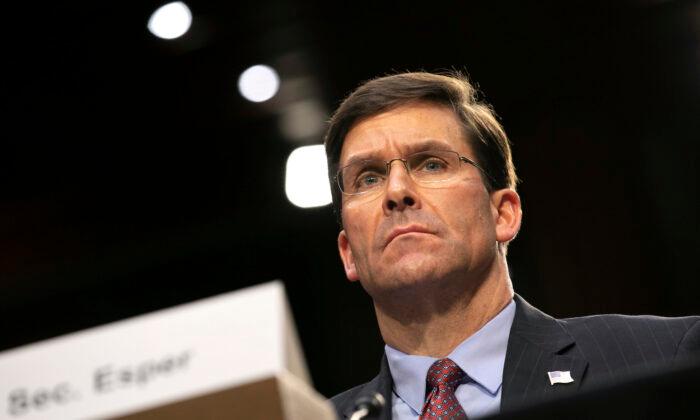The Pentagon has announced it will move 11,900 troops, along with its European command headquarters, out of Germany, as it shifts to a more flexible rotational model and reshuffles units closer to NATO’s Eastern flank with Russia.
The change follows President Donald Trump’s announcement last month of a reduction of the 36,000 troops currently stationed in Germany.
“The current EUCOM plan will reposition approximately 11,900 military personnel from Germany, from roughly 36,000 down to 24,000 in a manner that will strengthen NATO [and] enhance the deterrence of Russia,” he said.
Nearly 5,600 service members will be repositioned within NATO countries, and approximately 6,400 will return to the United States, Esper said. Many of the units that do return home will begin conducting rotational deployments back to Europe, he said.
Rotational deployments align with a broader strategic shift toward less predictable, more flexible deployments from the U.S. mainland, from bombers to aircraft carriers.
Nearly half of all U.S. service members in Europe are currently based in Germany, where the U.S. command headquarters is located.
“Various United States headquarters will be consolidated in locations in Europe, outside of Germany, including in some cases, co-locating at the same locations as their NATO counterparts in Belgium and Italy,” said Esper. “This will strengthen NATO and improve the operational efficiency and readiness of over 2,000 service members in these headquarters.”
The nearly 4,500 members of the Second Cavalry Regiment will return to the United States. Meanwhile, other Stryker units will begin continuous rotations in the Black Sea region, said Esper, “to enhance deterrence, and reassure allies along NATO’s southeastern flank.”
The 2,500 airmen based in the UK, responsible for refueling and special ops, won’t be moving to Germany as originally planned.
“We also plan on rotating the lead element of the Army’s newly established Fifth Corps headquarters to Poland,” said Esper.
“This rebalance, consistent with the NDS (National Defense Strategy) will align NATO and Eucom capabilities, better distribute forces across Europe and increase the use of rotational forces thus bolstering our commitment to Europe,” Air Force Gen. John E. Hyten, vice chairman of Joint Chiefs of Staff, told reporters.

All U.S. combatant commands were under review to ensure they meet the priorities of 2018 National Defense Strategy’s demands to tackle Great Power competition with Russia and China, Esper said. He indicated that the change in plans to EUCOM both accommodated the president’s direction to reduce troops in Germany and the strategic requirements of the military.
When he announced the plans in June, Trump said: “So we’re protecting Germany and they’re delinquent. That doesn’t make sense. So I said, we’re going to bring down the count to 25,000 soldiers,” Trump said, adding that “they treat us very badly on trade.”
Esper declined to characterize a distinction between Trump’s rationale for pulling troops from Germany, and the strategic rationale of the plans. However, he did note that despite being one of the wealthiest nations in Europe, Germany was still below its NATO commitment to 2 percent of GDP on military spending agreed in 2016.
Esper said the goal is to make the changes as fast as possible.
“We could see some moves begin within weeks, others will take longer.”
The changes toward a more flexible rotational model of deployment are part of broader changes in U.S. military strategy to keep adversaries on their toes.

As part of the same broader strategic shift to unpredictability, the Navy has ditched its previous clockwork deployment cycles, and the Air Force has started Bomber Task Force missions, carrying out long-range missions from the U.S. mainland.
Esper said that he expects the changes to cost several billion dollars.





